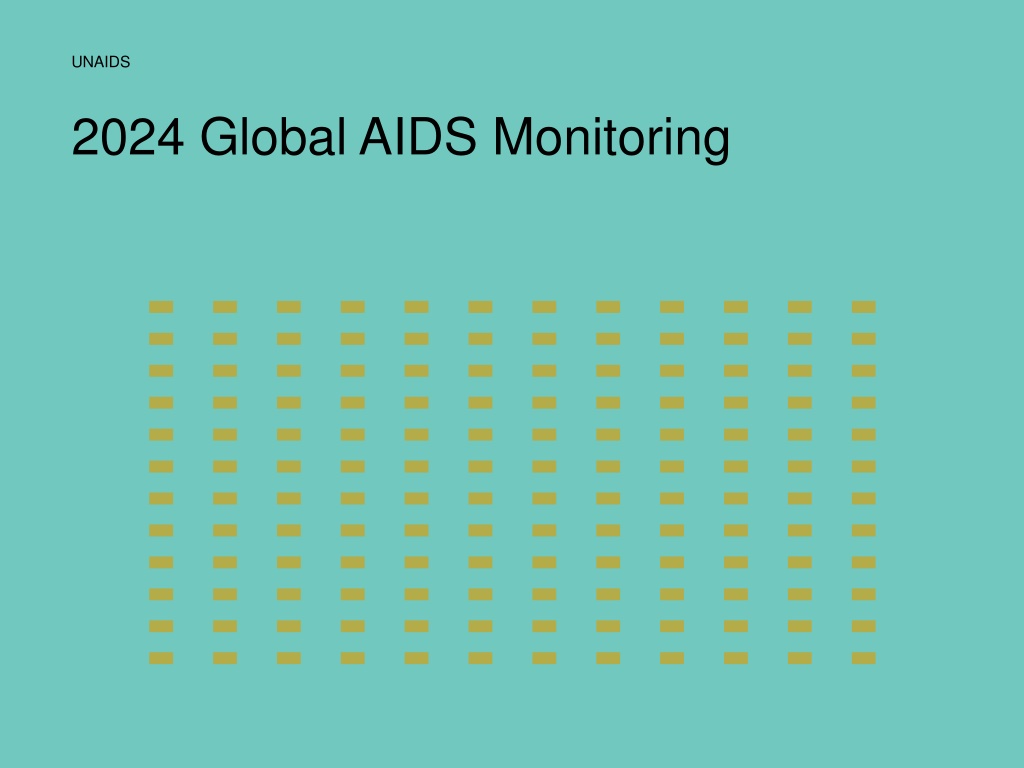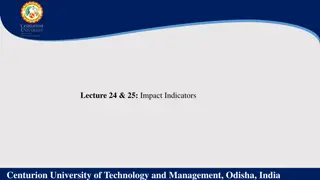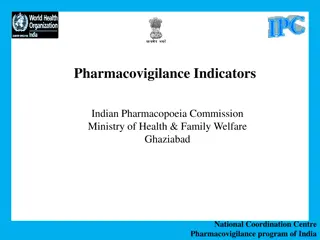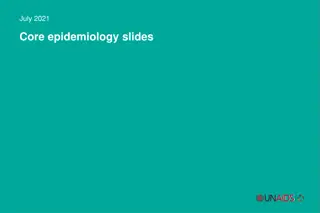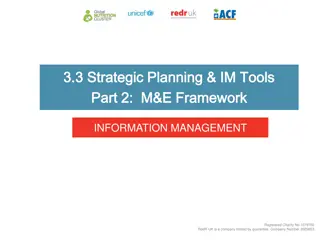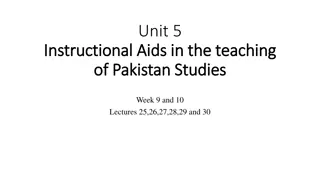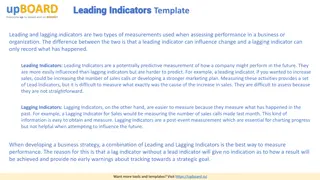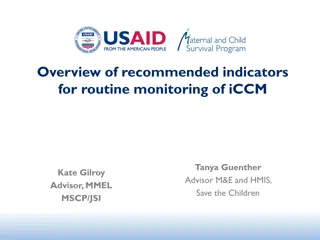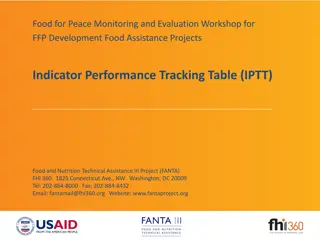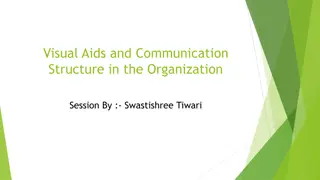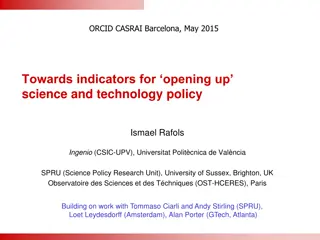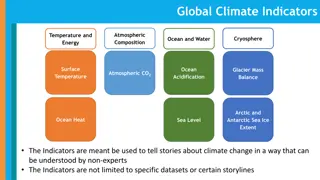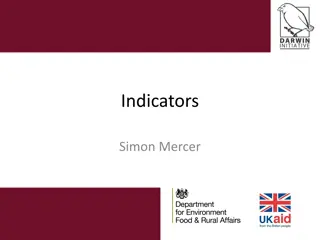Updates and New Indicators in 2024 Global AIDS Monitoring Reports
Updates in the 2024 Global AIDS Monitoring reports include new indicators related to gender equality, human rights, and stigma elimination, changes to existing indicators, and terminology updates. Four new indicators focus on gender responsiveness of HIV services, discriminatory attitudes in health facilities and police, management of advanced HIV disease, and differentiated service delivery. The reporting platform link and details on data collection tools are provided for reference.
Download Presentation

Please find below an Image/Link to download the presentation.
The content on the website is provided AS IS for your information and personal use only. It may not be sold, licensed, or shared on other websites without obtaining consent from the author. Download presentation by click this link. If you encounter any issues during the download, it is possible that the publisher has removed the file from their server.
E N D
Presentation Transcript
UNAIDS 2024 Global AIDS Monitoring
2024 GAM reporting Indicator data Including disaggregations and sub-national data, where requested National Commitments and Policy Instrument (NCPI) Narrative report (optional) AIDS Medicines and Diagnostics Survey Link to the reporting platform: https://aidsreportingtool.unaids.org/
Four new indicators related to the 10-10-10 targets on achieving gender equality, realizing human rights, and eliminating stigma and discrimination: 4.3 Gender-responsiveness of HIV services* 6.8 Discriminatory attitudes towards people living with HIV among health facility staff 6.9 Discriminatory attitudes towards people from key populations among health facility staff (A D) 6.10 Discriminatory attitudes towards people from key populations among police (A D)* Three new indicators on management of advanced HIV disease and differentiated service delivery: 2.8 Management of cryptococcal infection 7.15 Coverage of differentiated service delivery antiretroviral therapy models among people living with HIV currently on antiretroviral therapy 7.16 Viral suppression among people living with HIV engaged in differentiated service delivery antiretroviral therapy models *Indicators based on new data collection tools. Technical briefs with the tools and guidance for implementation will be available soon.
2.4 Late HIV diagnosis: Indicator name updated to Advanced HIV disease and late HIV diagnosis Focuses on people with a CD4 cell count <200cells/mm3 (or <15% for children) New disaggregation by time of CD4 cell count (at initial diagnosis, at initiation/re-initiation of ART) Data requested on the total number of people who received a CD4 test at initial diagnosis and at initiation/re-initiation of ART in four categories of CD4 cell count (>200, 200 to <350, 350 to <500, 500) 3.1 HIV testing in pregnant women: Countries with a population of more than 250 000 people will now report on this indicator within Spectrum. 6.6 Avoidance of health care among key populations because of stigma and discrimination (A D): Modified to refer only to avoidance of health-care services among key populations. The other three sub-items previously included in the indicator definition have been removed. 8.2 Antiretroviral medicines: unit prices and volume: Expanded to include other HIV-related regimens beyond ARVs. See updated Annex 3 for full list.
Terminology updates: Prisoners has been updated throughout the guidelines to people in prisons and other closed settings 1.4 HIV testing among key populations (A D): The indicator name has been updated to HIV testing and status awareness among key populations to better reflect the purpose of this indicator 7.8 People living with HIV with active tuberculosis disease: Active TB disease has been updated throughout to TB disease The NCPI for 2024 reporting consists of Part A (to be completed by national authorities) and Part B (to be completed by community and civil society representatives and other non-governmental partners). The wording of some of the questions has been further refined based on experiences in previous reporting rounds and to reflect developments in policy recommendations and available technologies. Some questions have also been added and others removed.
Spectrum and Naomi estimates One of the main tools that can be used to obtain denominators for reporting is the Spectrum software package. Countries can select to use Spectrum estimates as the source for reporting on the following GAM indicators: 1.1. HIV incidence 2.1, 2.2 and 2.3. 95-95-95. HIV testing and treatment 2.7. AIDS mortality 3.1 HIV testing in pregnant women 3.2. Early infant diagnosis 3.3. Vertical transmission of HIV 3.4. Preventing the vertical transmission of HIV Results will be obtained directly from the final national Spectrum file. Reporting on sub- national data for the indicator will be done in the Global AIDS Monitoring reporting tool For indicators above where sub-national data are requested: if a country has sub-national estimates developed using Naomi, these data will be obtained directly from the final Naomi file.
Multisectoral engagement Countries are encouraged to engage a multisectoral group of stakeholders in the GAM reporting process, including from community-led organizations and appropriate civil society representatives
Support during the GAM reporting process
Support during the reporting process Technical assistance is available from UNAIDS, UNICEF and/or WHO country offices Support is also available from the UNAIDS Strategic Information Department (AIDSreporting@unaids.org)
For more information visit: https://www.unaids.org/en/global-aids-monitoring
